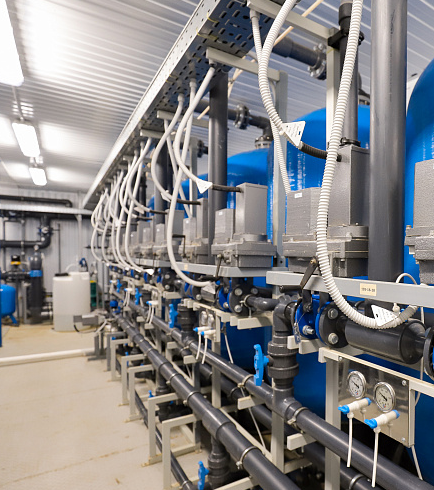Oct . 20, 2024 23:59 Back to list
Wiring Guidelines for Deep Well Submersible Pump Installation and Maintenance
Understanding Deep Well Submersible Pump Wiring
Deep well submersible pumps are critical components in various applications, particularly in agricultural irrigation, water supply, and groundwater extraction systems. These pumps are submerged below the water level and are designed to push water to the surface efficiently. However, to ensure optimal operation, proper wiring and electrical connections are essential. In this article, we will discuss the wiring aspects of deep well submersible pumps, including the importance of correct installation, potential issues, and maintenance tips.
Importance of Proper Wiring
The electrical wiring of a deep well submersible pump is crucial for its performance and longevity. Unlike surface pumps that are above ground, submersible pumps operate in a submerged environment. This unique setting demands that the wiring be resistant to moisture, corrosion, and potential damage from high pressures. If the wiring is not appropriately installed or protected, it can result in pump failure, electrical shock, or even hazardous situations like fires.
Key Components of Wiring a Submersible Pump
1. Power Source Before wiring the pump, it is important to determine the power source. Many deep well submersible pumps operate on either 230V or 460V. The correct voltage must be matched with the pump specification to ensure efficient operation.
2. Control Box The control box regulates the power supply to the pump. It contains overload protection, which protects the pump from excessive current and prevents potential burnouts. Proper wiring from the power source to the control box is essential for effective control of the pump.
3. Submersible Pump Cable This specialized wiring connects the motor of the pump to the control box. The cable needs to be durable, insulated, and rated for submersible applications. Typically, flat or round cables are used, with multiple conductors to handle power, ground, and sometimes control signals.
4. Grounding Grounding is a vital safety measure. A well-grounded system protects against electrical malfunctions and reduces the risk of electrical shock. Grounding rods or systems should be installed in accordance with local electrical codes.
deep well submersible pump wiring

5. Disconnect Switch The disconnect switch provides a means to safely turn off the pump for maintenance or emergency situations. It should be easily accessible and clearly marked, ensuring that operators can shut off power quickly if necessary.
Common Wiring Issues
Several problems can occur if wiring is not handled correctly. These include
- Short Circuits Improperly insulated wires can make contact with water or the well casing, leading to short circuits that can damage the pump and pose safety risks.
- Overheating Inadequate wire gauge can cause overheating, leading to reduced efficiency and potential motor failure. Always follow the manufacturer's recommendations for wire size based on the pump's amperage.
- Intermittent Operation Loose connections or damaged cables can cause the pump to operate intermittently, leading to inconsistent water supply and unnecessary wear on the motor.
Maintenance Tips
To keep your deep well submersible pump running efficiently, it's important to perform regular inspections. Check the wiring for signs of wear, corrosion, or damage. Ensure connections are tight and secure, and replace any damaged components immediately. Additionally, consider using waterproof junction boxes to protect connections from moisture and contaminants.
In conclusion, properly wiring a deep well submersible pump is essential for its efficient and safe operation. Understanding the wiring components, potential issues, and maintenance needs can significantly enhance the lifespan and performance of the pump. By following the outlined practices and recommendations, users can enjoy reliable water supply and peace of mind knowing their system is well-maintained.
-
Submersible Water Pump: The Efficient 'Power Pioneer' of the Underwater World
NewsJul.01,2025
-
Submersible Pond Pump: The Hidden Guardian of Water Landscape Ecology
NewsJul.01,2025
-
Stainless Well Pump: A Reliable and Durable Pumping Main Force
NewsJul.01,2025
-
Stainless Steel Submersible Pump: An Efficient and Versatile Tool for Underwater Operations
NewsJul.01,2025
-
Deep Well Submersible Pump: An Efficient 'Sucker' of Groundwater Sources
NewsJul.01,2025
-
Deep Water Well Pump: An Efficient 'Sucker' of Groundwater Sources
NewsJul.01,2025
-
 Submersible Water Pump: The Efficient 'Power Pioneer' of the Underwater WorldIn the field of hydraulic equipment, the Submersible Water Pump has become the core equipment for underwater operations and water resource transportation due to its unique design and excellent performance.Detail
Submersible Water Pump: The Efficient 'Power Pioneer' of the Underwater WorldIn the field of hydraulic equipment, the Submersible Water Pump has become the core equipment for underwater operations and water resource transportation due to its unique design and excellent performance.Detail -
 Submersible Pond Pump: The Hidden Guardian of Water Landscape EcologyIn courtyard landscapes, ecological ponds, and even small-scale water conservancy projects, there is a silent yet indispensable equipment - the Submersible Pond Pump.Detail
Submersible Pond Pump: The Hidden Guardian of Water Landscape EcologyIn courtyard landscapes, ecological ponds, and even small-scale water conservancy projects, there is a silent yet indispensable equipment - the Submersible Pond Pump.Detail -
 Stainless Well Pump: A Reliable and Durable Pumping Main ForceIn the field of water resource transportation, Stainless Well Pump has become the core equipment for various pumping scenarios with its excellent performance and reliable quality.Detail
Stainless Well Pump: A Reliable and Durable Pumping Main ForceIn the field of water resource transportation, Stainless Well Pump has become the core equipment for various pumping scenarios with its excellent performance and reliable quality.Detail
